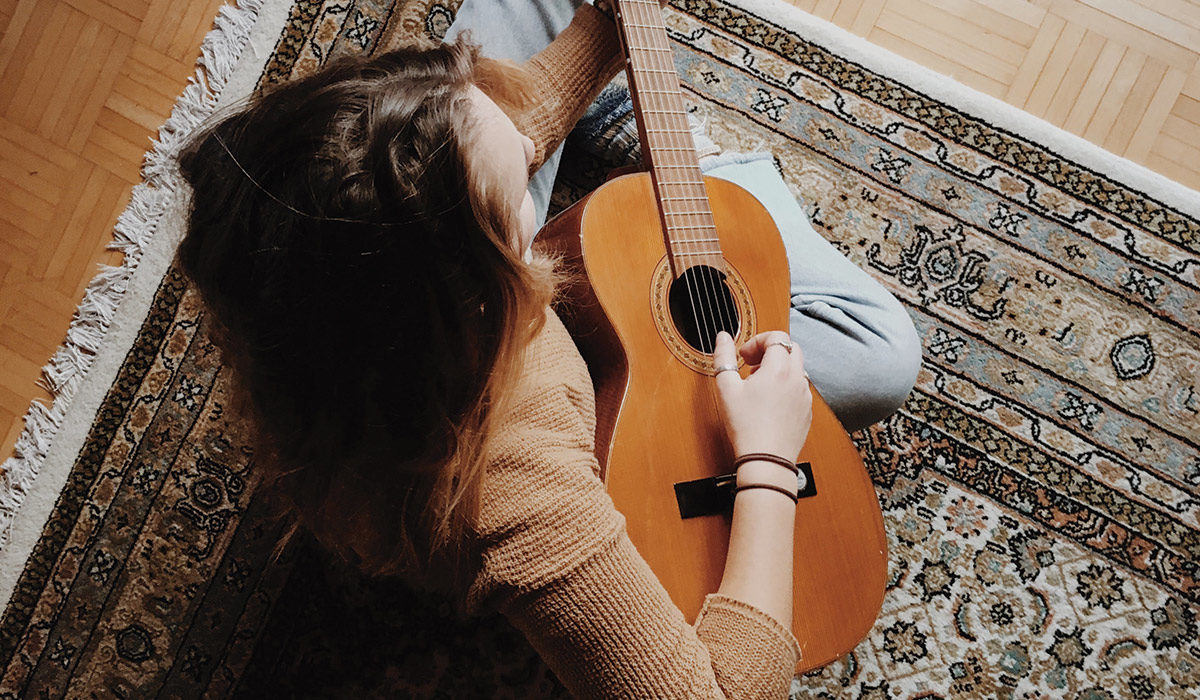Tune Those Strings: A Reflection on Attachment

I’m all up in the business of attachment these days. I observe the attachment styles of friends and family members. I consider my attachment dynamics and wonder how I have impacted my children’s attachment. I’m reading about it within the realms of trauma, racial issues, neuroscience, and yoga. Everywhere I go, there it is.
So maybe attachment is all up in MY business.
When babies do not receive emotional regulation, the nervous system enters the fight, flight or freeze response. That is not new information. Babies cry and we comfort them. Or because of stressors in our lives we don’t. Or we do so but with dysregulated systems (which babies sense). The aspect of the whole dance that strikes me is this: When that fight, freeze, or flight state is not attended to consistently (or tended to by a dysregulated parent), the baby will enter a stage of hyperarousal called parasympathetic withdrawal.
Parasympathetic withdrawal preserves energy by safeguarding us from our OWN feelings.
I want to write a string of expletives. I feel exposed. I can remember 20 years ago when a friend asked me how I felt about something that was said to me. I honestly couldn’t answer. I could tell her what I thought. But I had no idea what I felt. It was like peering into an empty room and trying to describe the furniture. There is NO furniture. I had feelings, but my dissociation from them was so extreme that I could no more name them than I could sing to you in French. Thankfully, I have come a LONG way in those 20 years. And yet, I still find my propensity to bypass feelings as second nature as riding a bicycle.
And of course, these aspects impact my family and our individual attachments. This is not said to berate myself but intended as space to honestly name that I (that we all) can benefit from the growth required to increase healthier attachment structures.
My propensity to move away from my feelings is complex in regard to attunement. I can attune well to others. However, a couple of months ago my husband brought to light a blind spot. I would be lying if I told you I accepted his feedback with a loving stance. It took work to get there.
My defensive posture reared up like a mama-bear whose cubs are threatened. But even mama-
bears need to sit back and be willing to learn, instead of fight.
If I attune well to your feelings but ignore my own, I am misattuning. True attunement comes when we resonate with each other in a kind of limbic unison. My visually minded husband
described it like this: Imagine two guitar players preparing for a concert. Even if they have both tuned their instruments before walking on stage, they will pluck their strings in each other’s presence to make sure the precise tone of the strings is in sync. It takes BOTH musicians to continue to pluck their strings to determine if they are truly in tune.
If I don’t feel safe in a conversation, I move away from my own feelings and focus on the other person. Or I withdraw. The first move may feel loving to the other, but it isn’t. Both moves become a way of dissociating from my feelings. I stop plucking my string. My companion is left playing alone.
No duet can be performed solo.
I am grateful for the insight. My husband turned a light on in a room where it was dark. I may not be pleased with what I see, but I can approach the uncared-for space with the intention to mature, rather than walking past the light.
The growth potential is astounding. We can heal our attachments. We can go from being
insecurely attached to creating “earned secure attachment (secure attachments acquired in
adulthood).” Earned secure attachment is the means to gently heal our bodies from
parasympathetic withdrawal.
The invitation is to bring our full selves to safe-enough individuals. A “safe-enough” person allows us to feel at rest while authentically showing up without fear of adverse consequences. Our right brains can connect with another right brain and participate in the communion we were meant to have (or to give) as parent and child. This can be engaged with a spouse, therapist, friend, mentor, spiritual guide, or any other safe-enough individual.
On the stage of attachment, do we play solo or do we lean in to hear each note until we are
synchronizing with love?
